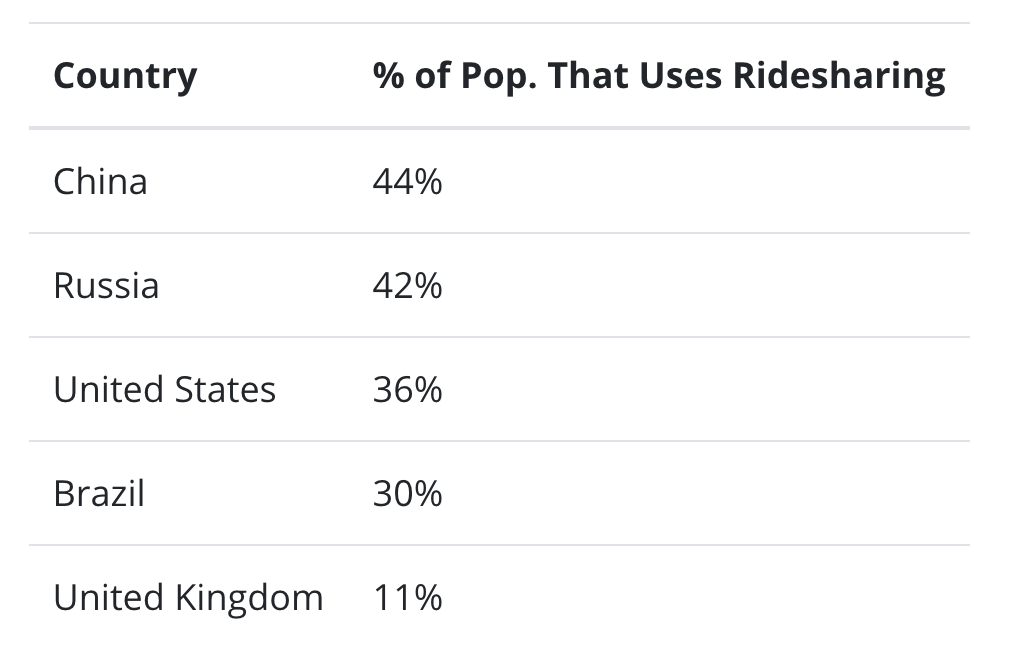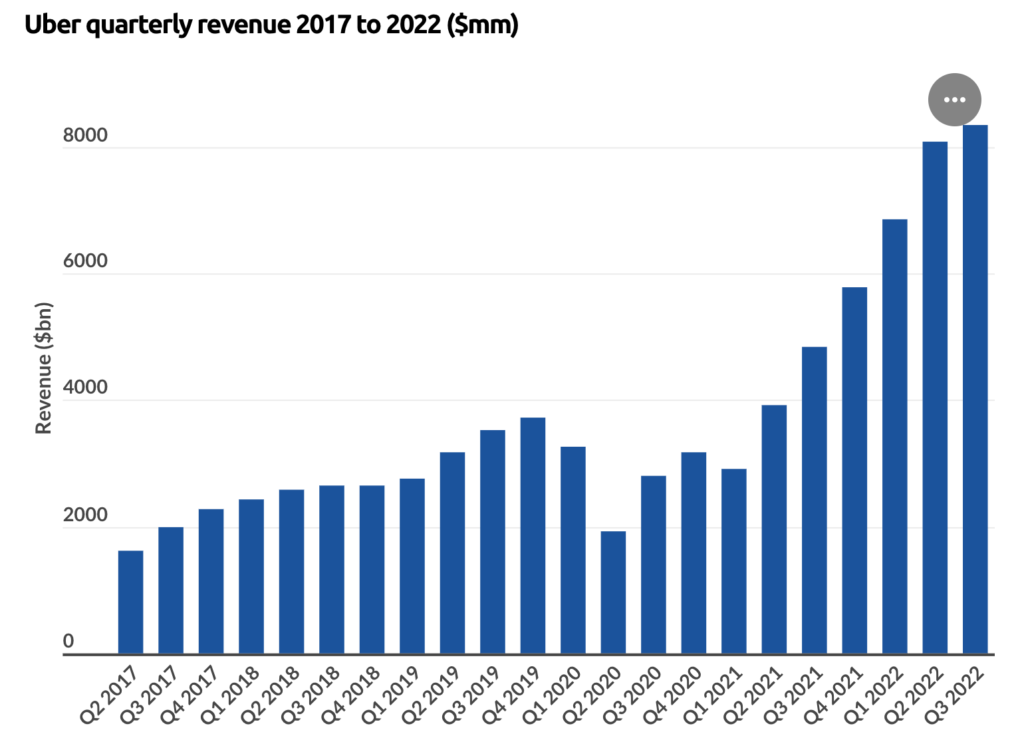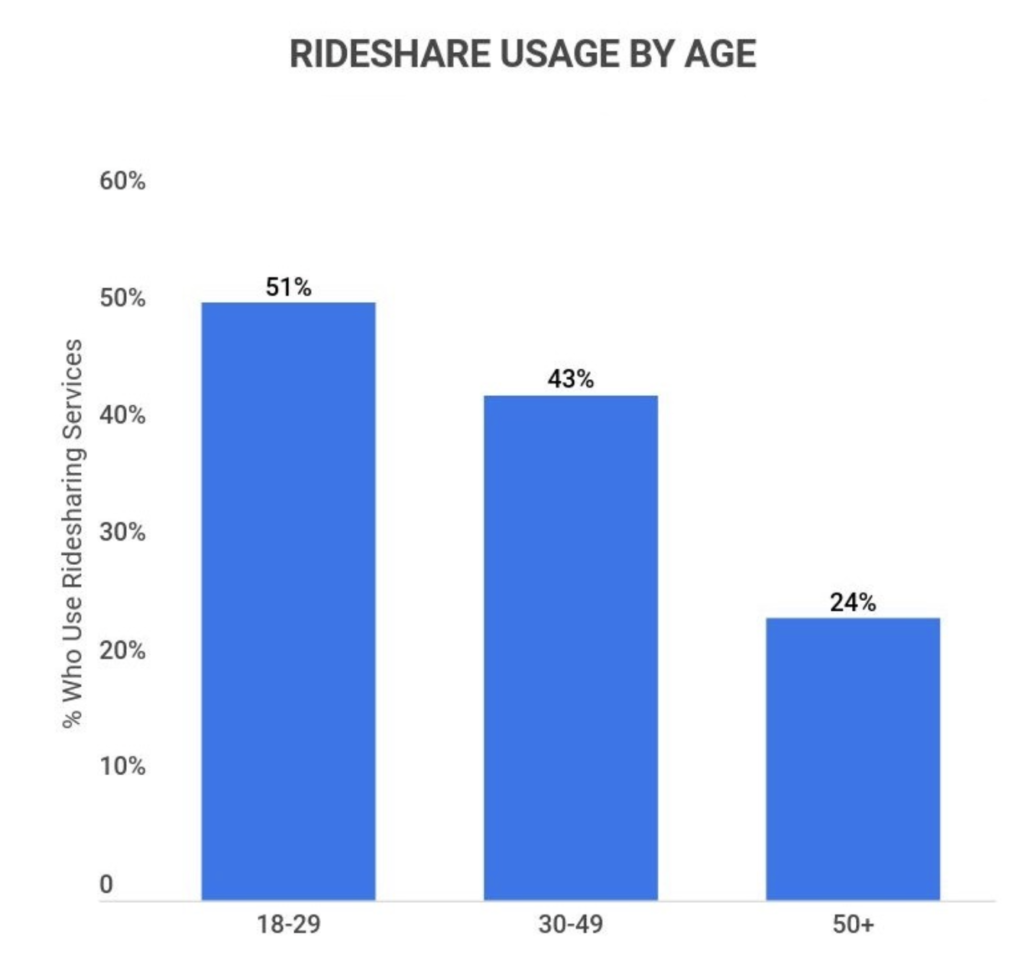The ride sharing mobile app industry has witnessed significant growth in recent years, and this trend is expected to hold its course.
This growth is driven by the convenience and affordability that ride-sharing services offer in comparison to traditional taxi services.
According to a recent report by MarketWatch, the global ride-sharing market size was valued at USD 64,144.69 million in 2021 and is expected to expand at a compound annual growth rate (CAGR) of 13.65% during the forecast period, reaching USD 138,230.11 million by 2027. This indicates the ride-sharing industry will continue to grow in the coming years.
Introduction: Emerging Trends In The Ride Sharing Mobile App Industry
Additionally, there is a growing trend towards shared mobility, which includes not just ride-sharing, but also car-sharing and peer-to-peer car rentals. McKinsey reports that the shared-mobility market, which includes e-hailing, accounted for the largest share of global consumer spending in 2019, at $120 billion to $130 billion.
In this article, we will discuss some emerging trends in the ride sharing mobile app industry.
Personalised User Experience
Ride sharing companies are focusing on providing a more personalised user experience to their customers. This includes features such as enhanced navigation and routing, multiple payment options, and integration with other apps.
-
Enhanced Navigation and Routing
Enhanced navigation and routing features can help riders save time and get to their destinations quicker by providing the drivers with real-time traffic updates and alternative route options.
This can be particularly helpful in areas where the traffic is substantial or when unexpected road closures and accidents occur.
-
Multiple Payment Options
Offering multiple payment options can also enhance the user experience by giving riders more flexibility and convenience. For example, riders may prefer to use a specific payment method or may want to split the fare with other riders in their group.

Having multiple payment options can make the process of paying for rides more seamless and hassle-free.
-
Integration with Other Apps
Integration with other apps can also be beneficial for riders as it could provide them with a more comprehensive user experience. For example, integrating with a music streaming app can allow riders to listen to their favourite songs during a ride.
Or ride sharing companies can integrate their platform with food delivery apps that allow riders to order food that can be delivered at the destination or to a location of their preference.
Electric and Hybrid Vehicles
With increasing concerns over climate change, ride sharing companies are shifting towards electric and hybrid vehicles. This trend is mainly driven by government regulations and incentives that encourage the adoption of sustainable transportation options.
One emerging trend in the ride-sharing industry is the increasing adoption of electric vehicles. According to McKinsey, the number of electric vehicles in ride-sharing fleets is expected to increase from about 100,000 in 2017 to over 1.5 million in 2025.

-
Government Regulations and Incentives
Government regulations and incentives can play a crucial role in encouraging the adoption of sustainable transportation options. For example, some governments offer tax incentives or rebates to consumers who purchase electric or hybrid vehicles.
Additionally, governments may impose stricter emission standards for vehicles, which can incentivise companies to shift towards electric and hybrid vehicles that produce fewer emissions.
Safety Features
Safety is a top priority for ride-sharing companies. To ensure the safety of riders and drivers, ride-sharing companies are investing in advanced driver screening, real-time monitoring and feedback, and integration with emergency services.
Another trend is the continued emphasis on safety, both for passengers and drivers. Ride sharing companies are investing in new technologies and protocols to ensure the safety of their users, including real-time background checks, biometric identification, and in-app safety features.
-
Advanced Driver Screening
Advanced driver screening involves thorough background checks, driving history checks, and regular vehicle inspections to ensure that drivers meet the safety standards set by the ride-sharing company.
This process can help identify potential safety risks, such as drivers with a history of reckless driving or criminal offences, and prevent them from becoming ride-share drivers.
-
Real-Time Monitoring and Feedback
Real-time monitoring and feedback can also contribute to ensuring the safety of riders and drivers.
By monitoring factors such as driving speed, route deviation, and sudden braking, ride-sharing companies can identify potential safety risks and provide immediate feedback to drivers to encourage safe driving habits.
-
Integration with Emergency Services
Integration with emergency services is also an important safety feature offered by ride-sharing companies. In the event of an emergency, riders and drivers can quickly access emergency assistance through the ride-sharing app.
This can include features such as the ability to call 911 directly from the app, share real-time location with emergency responders, or contact the ride-sharing company’s safety team for assistance.
Artificial Intelligence and Machine Learning
Artificial intelligence (AI) and machine learning (ML) are increasingly being used in the ride-sharing industry. This includes predictive analytics, dynamic pricing, and smart matching.
-
Predictive Analytics
Predictive analytics involves using historical data and algorithms to predict future rider demand and allocate resources more efficiently.

For example, a ride-sharing company may use predictive analytics to determine which areas are likely to have higher demand at certain times of the day and allocate more drivers to those areas accordingly.
This can help to reduce wait times for riders and increase the efficiency of the ride-sharing service.
-
Dynamic Pricing
Dynamic pricing is another application of AI and Machine Learning in the ride-sharing industry.
This involves adjusting prices in real-time based on supply and demand, allowing ride-sharing companies to provide riders with more affordable pricing options during low-demand periods and ensuring drivers are paid fairly during high-demand periods.
By using dynamic pricing, ride-sharing companies can balance supply and demand and create a more efficient marketplace.
-
Smart Matching
Smart matching is a third application of AI and machine learning in the ride-sharing industry. This involves using data and algorithms to match riders with the most appropriate drivers based on factors such as driver experience, vehicle type, and rider preferences.
By using smart matching, ride-sharing companies can provide more personalised and efficient service for riders while ensuring that drivers are matched with riders who are most likely to have a positive experience.
Partnerships and Collaborations
Ride-sharing companies are increasingly partnering with other companies to provide more comprehensive transportation options to their customers. This includes multi-modal transportation options, strategic alliances with businesses, and joint ventures with other ride-sharing companies.
-
Multi-Modal Transportation
Multi-modal transportation options are becoming increasingly popular among ride-sharing companies.
By offering riders the ability to seamlessly switch between different modes of transportation, such as ride-sharing and public transit, ride-sharing companies can provide a more convenient and efficient transportation experience.
This can aid in a big way to promote sustainable transportation and reduce traffic congestion.
-
Strategic Alliances with Businesses

Strategic alliances with businesses are another way that ride-sharing companies can expand their offerings and provide additional benefits to their customers. For example, a ride-sharing company may partner with a restaurant chain to offer riders exclusive discounts or promotions on their rides.
This can help to increase customer loyalty and drive additional revenue for both the ride-sharing company and the partner business.
-
Joint Ventures with Other Ride Sharing Companies
Joint ventures with other ride-sharing companies can also be an effective way for ride-sharing companies to increase market share and improve services.
By partnering with other companies in the industry, ride-sharing companies can expand their reach and offer riders a more comprehensive transportation experience.
Joint ventures can also help ride-sharing companies share resources and reduce costs, leading to a more efficient and sustainable business model.
Conclusion: Emerging Trends In The Ride Sharing Mobile App Industry
In conclusion, the ride-sharing industry is expected to continue its growth trajectory, with emerging trends including the adoption of electric vehicles, an emphasis on safety, and a shift towards shared mobility.
Trends in the ride sharing mobile app industry shows rapid evolution as new technologies and features emerge at regular intervals.
Personalised user experiences, electric and hybrid vehicles, safety features, AI and ML, and partnerships and collaborations are just a few of the emerging trends that are shaping the future of this industry.
As ride-sharing companies continue to innovate and improve their services, we can expect to see even more exciting developments in the years to come.
After an Engineering degree and a Diploma in Management I devoted 16+ years working in the automotive industry. My innate skill and extreme passion in writing, encouraged me to adopt it up as a profession. I have been writing for more than 10+ years in the software industry. The 400+ blogs I published are informative, exhaustive and interesting to a professional and causal reader.










